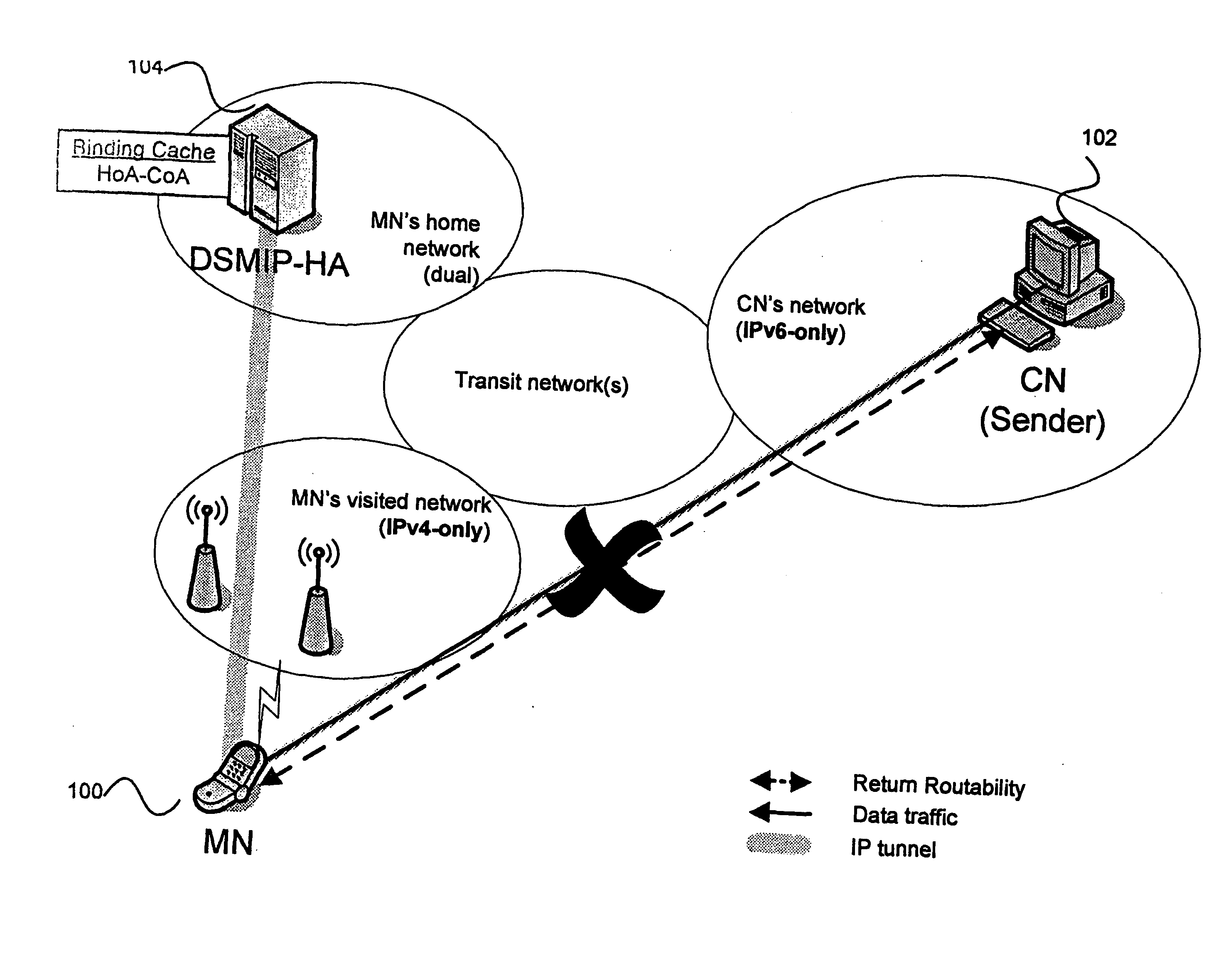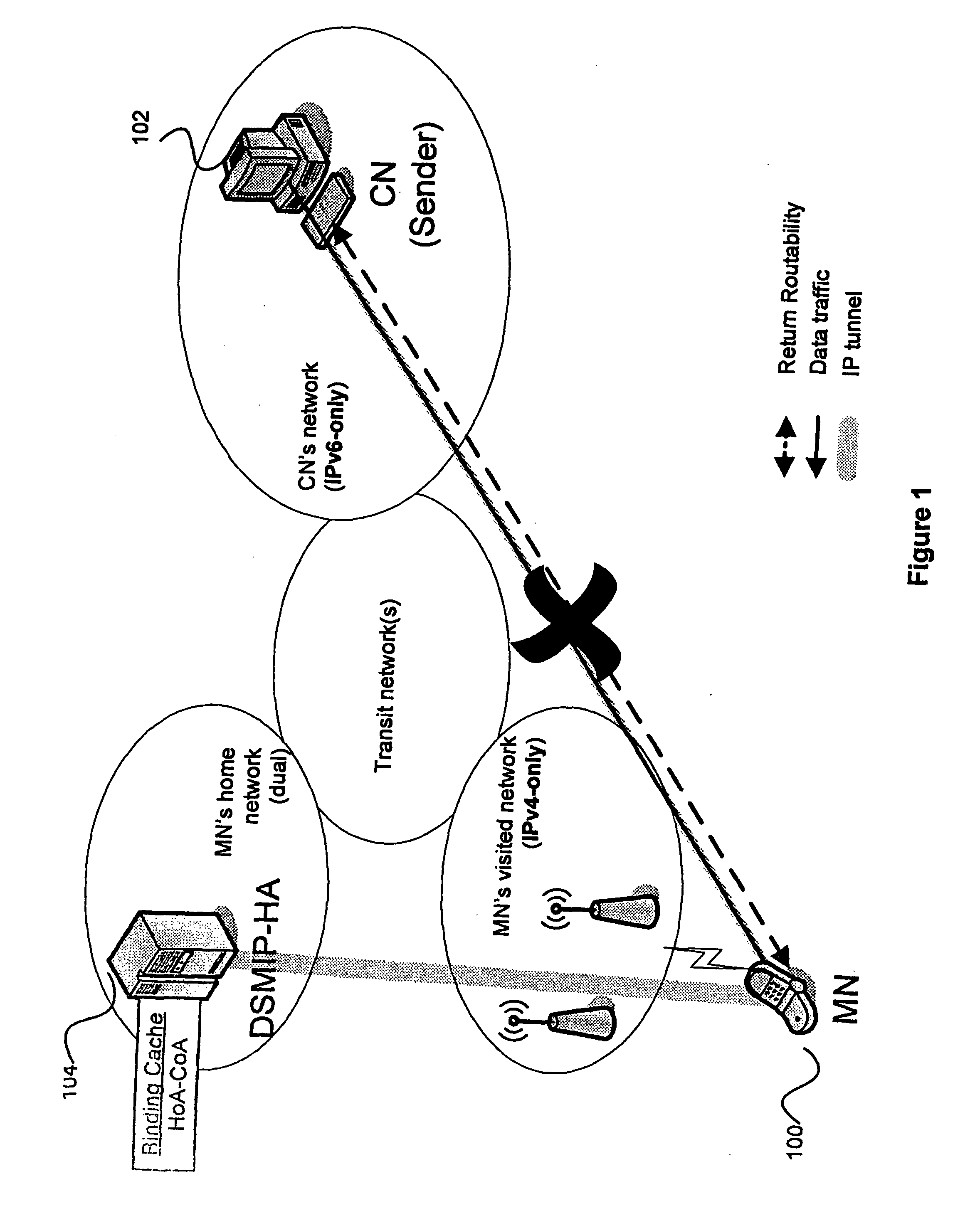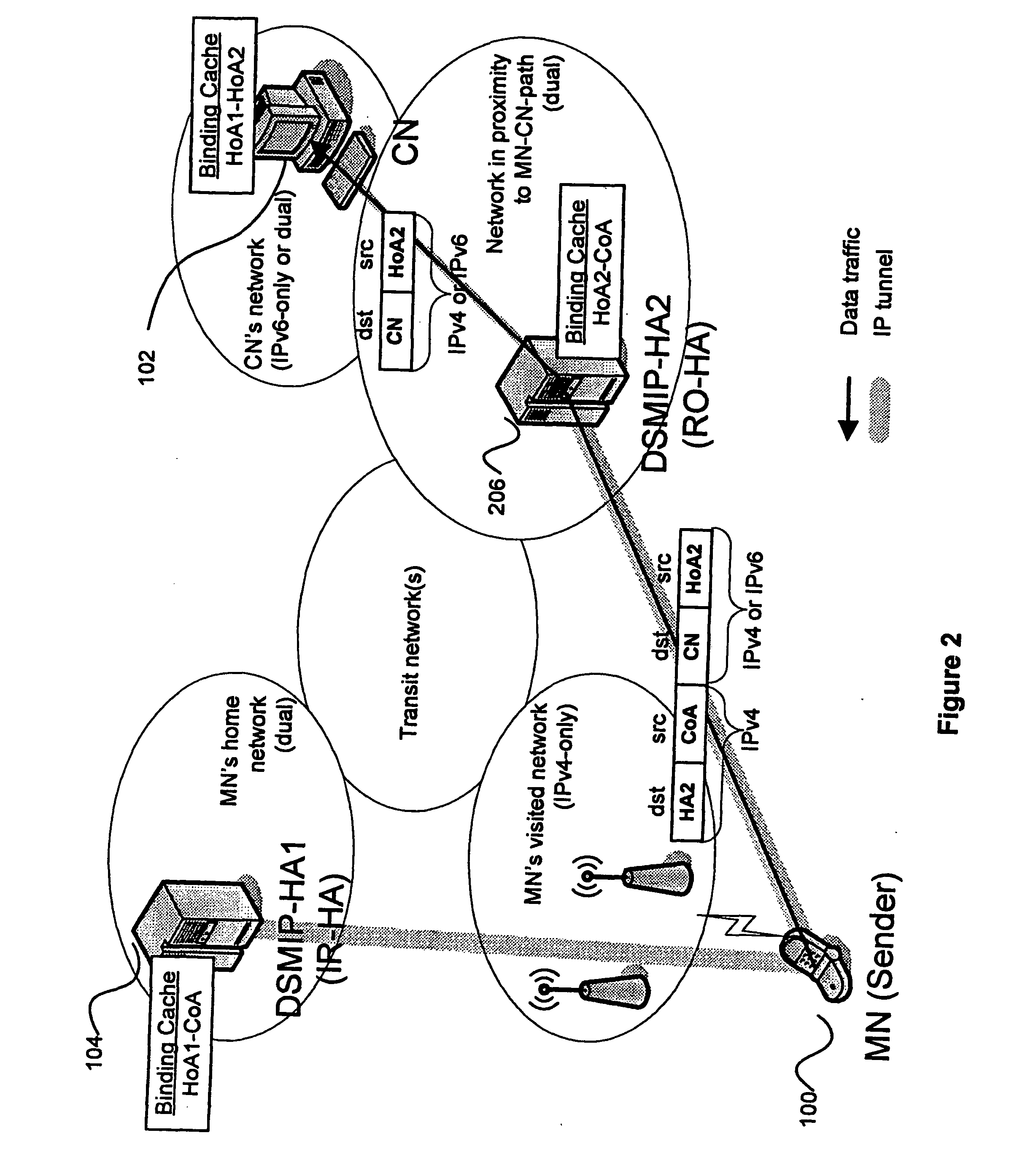Mobile IP route optimization in IP version transition scenarios
a mobile ip and transition scenario technology, applied in the field of mobile ip route optimization in ip version transition scenario, can solve the problems of high packet delay, inefficient routing, and connection breakage of one of the nodes
- Summary
- Abstract
- Description
- Claims
- Application Information
AI Technical Summary
Benefits of technology
Problems solved by technology
Method used
Image
Examples
Embodiment Construction
[0046]The following paragraphs will describe various embodiments of the invention including the procedure to solve the given problem, described for MN-initiated and CN-initiated sessions, respectively.
[0047]For exemplary purposes only, most of the embodiments are outlined in relation to a communication system with both IPv4 and IPv6 networks, and the terminology used in the subsequent sections mainly relates to the IPv4 and IPv6 terminology. However, the used terminology and the description of the embodiments with respect to a IPv4 and IPv6 architecture is not intended to limit the principles and ideas of the inventions to such systems.
[0048]Also, the detailed explanations given in the technical background section above are merely intended to better understand the mostly IPv4 and IPv6 specific exemplary embodiments described in the following, and should not be understood as limiting the invention to the described specific implementations of processors and functions in an IPv4 or IPv...
PUM
 Login to View More
Login to View More Abstract
Description
Claims
Application Information
 Login to View More
Login to View More - R&D
- Intellectual Property
- Life Sciences
- Materials
- Tech Scout
- Unparalleled Data Quality
- Higher Quality Content
- 60% Fewer Hallucinations
Browse by: Latest US Patents, China's latest patents, Technical Efficacy Thesaurus, Application Domain, Technology Topic, Popular Technical Reports.
© 2025 PatSnap. All rights reserved.Legal|Privacy policy|Modern Slavery Act Transparency Statement|Sitemap|About US| Contact US: help@patsnap.com



